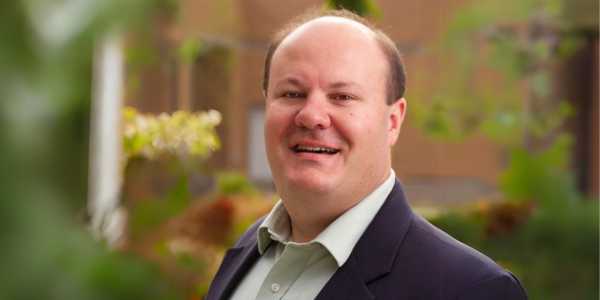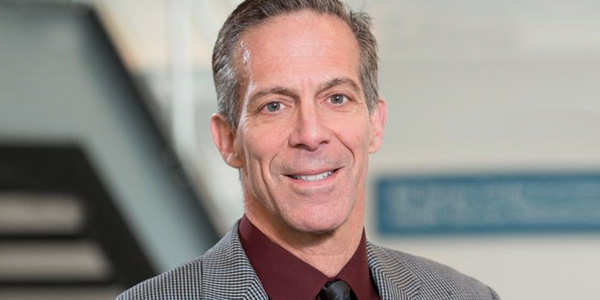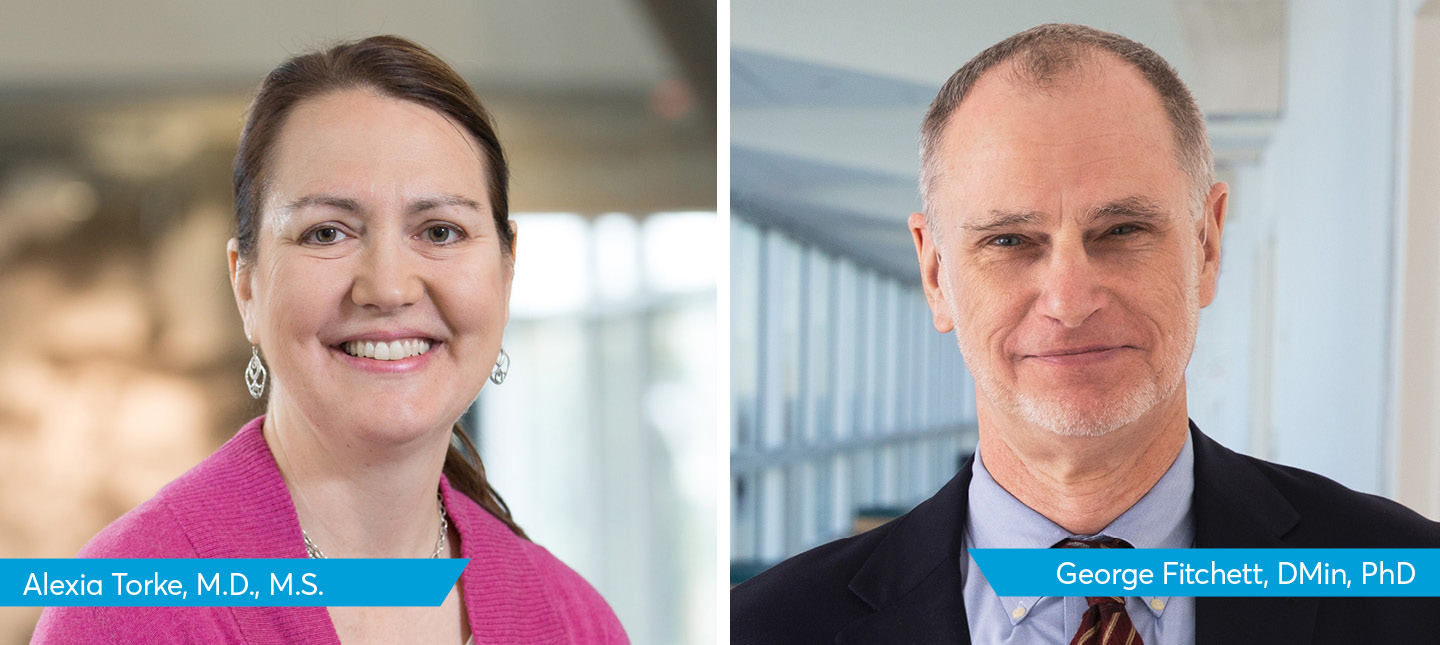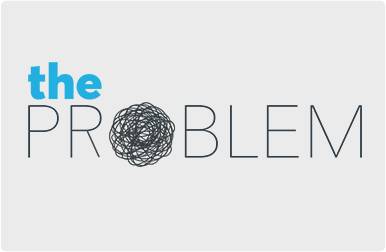Lack of access to healthy food can be a major barrier to health for people with diabetes. Learn about the problem and efforts to address it in the season finale.
Featuring Tami Hannon, David Marrero, Tyler Gough, Dave Miner, Ron Rice, Jennifer Bradley, and Jalissa Gascho.
Transcript:
Phil Lofton:
Welcome back everyone. This season, we’re looking at diabetes and the complications it can introduce into lives. This episode, we’ll be talking about access to healthy food, its relationship to diabetes, how it can impact communities and how people are working to provide healthy meals in Indianapolis. Welcome to The Problem. I’m your host, Phil Lofton.
Phil Lofton:
As the number of people living with diabetes grows, there are a number of factors that contribute to this increase. Here’s Dr. Tami Hannon, a Regenstrief affiliated scientist on how healthy food access and other factors have led to an increase in diabetes rates in families and across generations.
Tami Hannon:
Diabetes is a generational disease and it tends to actually manifest younger as the generations go. So grandma might’ve had diabetes when she was in her seventies. Mom might’ve been diagnosed in her forties. The child or the index case may be diagnosed at age 14. So we think that the environment is much different now than it was when grandma was a child.
We have increased access to ultra-processed foods, ultra refined flours and sugars, that are not healthy for our bodies and promote insulin resistance. We have decreased need for physical exercise. And also, we think that there could be an epigenetic phenomenon, where is a developing fetus exposed to higher blood sugars, even just a little bit higher blood sugars, impacts the risk for the development of diabetes in that person. We know that this happens in animals. So generations are at increased and increased risk for diabetes when they were developing in utero or as a fetus, if they were exposed to high blood sugars. So there’s no reason to think that this doesn’t happen in people too. So it’s genetic, it’s epigenetic. And then, it’s societal and environmental.
One thing I would say that’s a dilemma about access to food right now is that if you interview young people and young adults about what they eat, we eat a lot of ultra-processed, highly refined carbohydrate.And when you talk to kids about eating fruits and vegetables, you get a lot of that’s healthy, that’s nasty language. You get a lot of upturn nose, kind of eh. And even when you increase access to fruits and vegetables, the evidence of the accessibility of those things to young people is somewhat lacking because of the properties of highly refined foods in our bodies. The way that they make us feel immediately gives desire for those foods, right? The foods are somewhat designed to increase our desire for those foods. And so, it’s more than a question of increasing access to food. It’s also, the big problem of how do we give back? How do we reduce our intake of highly processed foods?
Phil Lofton:
Jennifer Bradley is a project manager on IU’s health population health team, where her main focus is addressing social determinants of health. Here’s her thoughts on how access to food could be a factor that could lead to better or worse outcomes for people living with diabetes.
Jennifer Bradley:
Compared with food secure respondents, people who are food insecure have a higher BMI, and they have a higher prevalence of diabetes. And not only that, but they have diabetes. But those who are food insecure are more likely to have poor glycemic control. So we kind of used this principle and that’s how we chose the clinic that we chose to pilot Fresh-food 2U at. We looked at a clinic that had a high proportion of diabetic patients, and then one that was in a low median income range. So we’re operating under the assumption that if patients are food insecure and there’s a lot of diabetics, then it’s more than likely they might have poor glycemic control based on the research.
And some of their reasons for that might be this kind of cycle, food insecurity can increase stress, it can increase poor mental health, and that decreases somebody’s ability to manage their overall health. They’re also forced to make tough decisions like, “Am I going to purchase more insulin this month or am I going to buy food for my family?” That can also lead to insulin rationing throughout the month, which is not good for your blood sugar if you’re diabetic. And so, as you have a decreased capacity to manage your overall health, your diabetes worsens, and it kind of creates this cycle where you’re making these hard choices between food and your health care.
Phil Lofton:
Dr. David Marrero, who we spoke with earlier this season is a social ecologist focused on the environmental factors that influence health. And when it comes to diabetes, access to healthy food can have a big impact on health.
Dave Marrero:
Because diabetes is highly linked to obesity. The way that we eat food, that we access food and the foods we can access are very, very important elements. And in many parts of the world, and in particularly in the United States, there’s difficulties for some populations in getting access to healthy, well balanced food sources.
So for example, where I work now, in Arizona, there are areas where in fact, there’s very few opportunities for people to seek out and get a wide array of healthy foods. They just don’t exist. If you have to drive 60 or 80 miles to go to the nearest grocery store, you have a bit of a problem. And that problem is exacerbated by things like economic disparity and poverty and things that coincide with this. So if you’re poor and you can’t afford the gas, you can’t afford to have a second car, you’re using the first car for everybody to get to their jobs, to work, you’re going to have problems getting to good food sources. So we have several food deserts here in Arizona. And as testimony to that, we have a large food bank here. The Community Food Bank in Tucson, Arizona, that has 190,000 clients in it right now that need assistance in getting sustenance food, let alone good quality food or foods that would help them to regulate their weight.
Top of that is social issues that go along with that. If you are in a culture where in fact obesity can be seen as a positive factor, that doesn’t help you to deal with the fact that obesity is also associated with the development of type 2 diabetes. It’s counterproductive to the idea that you are viewed as more economically stable, are in fact the aesthetics of a culture embrace heavyweight women for example.That kind of thing is very frequently observed around the world.
And we know that the policy issues that influence diabetes are numerous. It’s been tried many times to put it on taxes, for example, for sugar sweetened beverages, but we can’t do it because the economics and the lobbies for that prohibit that regulation. But if you take Mexico as an example, Mexico is the most obese country in the world right now. It’s 60 miles south of where I’m sitting and many, many people here in Arizona come over the border, that’s where they’re from. That’s a culture that drinks sugar sweetened beverages at excessively high levels. It’s sort of become a cultural norm and a mainstay to have Coca-Cola and sweetened beverages. And in Mexico, the beverages are sweetened with real sugar. They’re very serious about their sweetened beverages, same thing with ice cream, for example. The ice cream is very rich. It’s fabulous to taste, but it’s extremely high calorie and extremely high glucose levels.
So the policy ability to regulate what we eat and how we eat it, and what we can choose is complicated. And then culturally, you just have to look around to sort of see that we’ve embraced excessive food eating. And we live in a culture where now there are shows, literally television shows, like Man V. Food, where there’s a person that goes around and eats massive quantities at a sitting, just to see if it could be done. And we embrace that. So culturally, we’ve shifted ourselves into acceptance of larger food portions. Culturally, we’ve accepted larger levels of obesity. Socially and economically, it’s a big force in the universe now. And there are things that are in play to keep it in play. We know that in families when you can’t eat effectively and well, you start taking the option of cheap, but plentiful food sources.
Phil Lofton:
In Indianapolis, improving access to healthy food is a battle taken up by academia, health systems and non-profits alike. Meet Tyler Gough, who runs a non-profit called Indy Urban Acres. For the past several years, he’s been helping people in need get connected to food he grows on his farm.
Tyler Gough:
When we started, it was a partnership with Gleaners. So Gleaners is a food bank. We will get there 7:30, 8:00 in the morning, pick it, get it there by 10:00. It’ll be gone before they close. I mean, there’s that many people coming through that need healthy food. The other nice thing is that we can walk it there. If you’re going through hunger, if you’re at the food pantry, if you need emergency food assistance, that’s what a food pantry does, is something happened, right? Like you lost your job, your wife lost her job, you got sick. You don’t have health insurance. I mean, there’s a number… Your car broke down. Who knows what it is, why you’re there. But something is not good. Something not good in your life is happening.
So we could harvest food and I could put it in my truck and I could drive it up and unload it. But at that point for the people watching this whole thing unfold, that are waiting for food, that truck could come from anywhere. I mean, it could come from Muncie. It could come from anywhere. So what we like to do is harvest, put it in crates and then put it on a cart and then walk it there. And I’ve got no data behind this, but here’s what I hope is happening. And we walk up there as a staff, or if we have volunteers. I mean, if we have 30 volunteers, we all go. So here’s what I hope is happening. I hope that they can see how fresh it is and local it is. I mean, it’s got to come somewhere close, that they walked here. They didn’t drive here. And then they can see people that are there for them. The only reason we exist is to help them. And if you’ve kind of been beaten down by life, I hope that people always remember that there’s people out there that still care.
Phil Lofton:
Last episode, we learned about the DIP-IN diabetes prevention project from the Fairbanks School of Public Health at IUPUI. Ron Rice, a community health worker from that project had thoughts on how the COVID-19 pandemic impacted food access and choice in his community.
Ron Rice:
One of the issues… So obviously, when you’re isolated, you’re not going to be… You’re stressing out, that cabin fever kicks in and whatnot, and then you’re not getting active. So obviously, people’s health is going to transform, a lot of times for the worse. And then too, when you do food delivery and what whatnot, and again, absolutely thankful, thankful, thankful for the food that people like Gleaners and Second Helpings were able to give. At the same time, diabetics have a special diet, seniors have a special diet. And so, not all the food that we would bring, and they were essentials, but it wasn’t like we could give them a low carb pasta or a low-glycemic pasta or bread or stuff like that. We gave them what was given to us. And so, people need to eat and people need to survive.
So unfortunately, that was one of the downsides. I think even nationally, it’s not just this area, but nationally, you look at food distribution and the types of food that’s given, and it wasn’t really anything like, “They’re giving us a special senior thing.” Or a lot of times we had to make up something. We would open up all the boxes and all the donations that we got. And then we would look at it and say, “Okay, well, we’re going to the senior home to deliver food. What type of food are we going to put in these boxes for them? So that they’re not…” I had quite a few seniors actually turned down a box. Like, “I can’t eat this. I’m diabetic and I’m hypertensive. And if I eat this, I’m going to be in the hospital and I don’t want to go to the hospital.” Because for a lot of seniors, what they saw was people going into the hospital and never returning. And that was a real thing for a lot of people.
So we wanted to make sure that we were able to at least get some type of baseline of foods that we can give. So DIP-IN actually helped us out in one instance, where we were able to create a chart to put up on the wall of the room, the gym that we were using, where we had all the food stores, so that when people were making the boxes, they could look up there and see, “Hey, don’t put these items that we’re constantly getting in the seniors box, put these in instead.” Or put more raw vegetables or more produce in these boxes. And put more of the, whether it was processed food or your general run of the mill food that wasn’t necessarily health specific. Put those in those boxes.
Phil Lofton:
Tyler and his team at Indy Urban Acres have done their part during the pandemic to improve the quality of food offered for free around Indianapolis.
Tyler Gough:
The pandemic hit in March, everything shut down. I got a call from that same food pantry saying that, “We’re probably going to have to cut back some hours. Our volunteers are older people. So just want to let kind of where we’re at.” And I said, “Well, don’t do that. My farmers, we’re all younger.” Well, not me, everybody else is all younger. “We’re going to come over and we’re going to help you guys stack.” So we’ll just run the food pantry for a while. So we went over mid-March, right when this is all coming out and the numbers were exponentially growing. I mean, they were doubling and tripling from what we had done in the previous week. I mean, it was crazy what we were seeing as far as people that needed food and were real nervous about food.
But the thing for us, as a farm staff, what we saw that was shocking was kind of the fear in people’s eyes. These are people, in a lot of cases, that would pull up and say, “I’ve never been to a food pantry. How do I even do this?” There was a real fear that people wouldn’t be able to feed their family. So we as a farm staff, decided to kind of change some of the ways that we grew things and some of the things, other extra stuff we did, and really focus in on food production. And also, we were going to double our veggie boxes to 250 families.
So yeah, that’s what we did, 250 families got veggie boxes last year. Normally, we grow about 30,000 pounds of produce a year. Last year, it was almost 60.
Phil Lofton:
Wow. And all of that goes to veggie boxes or pantries, right?
Tyler Gough:
That’s right, 100% is donated. We don’t sell any produce, but we do-
Phil Lofton:
Wow, that’s awesome.
Tyler Gough:
I would say it’s probably, I don’t know, maybe two thirds food pantry, one-third veggie boxes. But we also, in years past… A farm that doesn’t sell anything, is going to have to get creative to stay in business. So we are a project of The Parks Alliance of Indianapolis. So they raise money for us, but we have like a plant sale that we do, that’s a huge fundraiser. And then we had a flower farm. So we were actually growing flowers, making bouquets, and then selling them to various grocery stores around the city.
Phil Lofton:
Wow.
Tyler Gough:
And we stopped doing that last year because we could kind of see the people needed something. They needed a little brightness in their day.
Phil Lofton:
Here’s Dave Miner, who works on the policy and advocacy side of food security on how the COVID-19 pandemic affected food access on a population and systemic level.
Dave Miner:
In general, it deepened the issue for a lot of people. Some people were newly in need, and that’s certainly a significant concern, but also a lot of people who, as I said, before the pandemic, we already had 200,000 people using food assistance, the amount of assistance that they needed jumped up. So it basically doubled from February to June. The good news was that the private charities, as well as the federal government programs were able to ramp up quickly and we met most of that increased need, but the need doubled and the meal gap doubled. It could have been a lot worse. The meal gap could’ve gone up much more than doubling. It could have gone up by 5X or 10X if the response hadn’t been good.
Take the food pantries’ example, you can’t have people inside. So food pantries traditionally have people come in and there’s a place where they can pick out the foods they want, which is good. Consumer choice is really important, but then you can’t do that. So most of them are putting a standard mix of food into a box and handing it to somebody who’s in a drive by sort of operation.
Phil Lofton:
Wow.
Dave Miner:
Yeah, it was a huge change, a really huge change in operation. Gleaners was able to keep operating because they had a bunch of reserves, were assigned to work for Gleaners because they couldn’t use their normal volunteers. Many of the food pantries are staffed by older people, retired people. And of course, many of them were most at risk from the virus and were told to stay home. So it was quite a shift that the pantries had to make and thankfully they… Some closed, but many were able to modify practices and continue.
Phil Lofton:
Problems are painfully simple; prevent tooth decay by brushing your teeth, eat when you’re hungry, sleep when you’re tired, those are not that big of a problem. Some are a little more complex. Say for example, you start a new job as an accountant and the company has been hemorrhaging money. Or you’re a doctor seeing a new patient and you’re trying to determine just exactly where that pain in their neck is actually coming from. Those are big and complex, but compared to others, they’re still simple.
Then you’ve got the biggest problems, the hairiest problems, problems that cause tectonic shifts in the way we live. These days, there are more than a few massive problems that we see every day; Alzheimer’s disease, drug addiction, and the COVID-19 pandemic are just some that come to mind. We know these problems because they stick around. They’re intricate and the solutions that might help solve them aren’t always politically or economically viable. They’re the biggest problems facing our society. And they’re the hardest to solve. Diabetes is a complex multifaceted issue. Understanding how we’ve gotten to where we are and how we can get to a healthier place as a society is a colossal, multi-disciplinary effort. But what an opportunity to make a difference, right?
As we wrap up our season on diabetes, I’d like to leave you with some thoughts from Jalissa, who we heard from back in our second episode.
Jalissa Gascho:
Diabetes, especially type 1, diabetes is just such a question mark and so unpredictable. And to say that I’m in good control doesn’t mean that I’ve got it all figured out or that I’ve got it perfected. What works for me one day might literally not work at all, literally the next day. Or what works one week might over the course of a year of developing as a body might no longer work. And that’s the really frustrating thing about being a diabetic is that you can figure everything out and it can work perfectly. And then, it might just change for a day, it just might not work. And there’s no explanation. Or you get something figured out with a food like oats and then all of a sudden it’s like, “Whoa, yep, can’t eat that anymore.”
People don’t know that. And no one would know that unless I offer that information randomly, like I just did now. Or if someone asked, “What are weird things that raise your blood sugars.” I just love when people are curious. And so, I think that’s one of those things, that if you… I think that transcends diabetes too. So if you know someone who maybe has something different about their life, if you ask in earnest curiosity, odds are, someone’s going to be excited to talk about it. And I love being able to do that.
Phil Lofton:
This has been The Problem. I’m your host, Phil Lofton. Music this episode was by Everlone, Public Universal Friend and Blue Dot Sessions. Our theme and additional musical cues were written and performed as always by Pooch.
The Problem is produced at Studio 134 in the Regenstrief Institute in Indianapolis, Indiana, where we connect and innovate to provide better care and better health. Learn more about our work and how you can get involved at regenstrief.org and see bonus content from this episode, including sources, pictures, and more at regenstrief.org/the problem. The Problem is written, hosted, edited, and produced by me, Phil Lofton, with additional editing by Andi Anibal, John Erickson and Jen Walker. Web design and graphics are by Andi Anibal and social media marketing is by Jen Walker. Special thanks to this season’s advisory council, including Tami Hannon, Janet Panoch, Lisa Yazel, Julie Pike, and Tiffany Doherty. Thanks for listening. Try to do some good out there.








